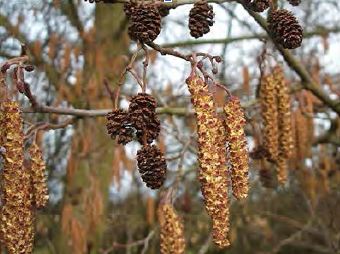Post Two
At the start of the wooden walkway the sands and pebbles of the well-drained Blackheath Beds give way to silty valley soils, very wet in winter.
In early spring look out for celandine on dry banks, in summer look for thin-spiked wood-sedge in wet areas.
“There’s a flower that shall be mine,
‘Tis the little Celandine
”
Towards the end of the boardwalk look for alder trees which are pollinated by wind. Their purple catkins turn yellow when ripe, shedding pollen (male) in early spring before leaves develop. Small, pink, female cones are found on the same tree.
After fertilisation, the cones turn green, then brown and shed seeds in autumn which may be eaten by birds.
Nodules on alder roots contain bacteria which fix nitrogen in the air into a form which the tree can absorb. The tree supplies the bacteria with sugars made in the leaves by photosynthesis allowing alder to grow in waterlogged soils where nitrogen available to plants is low.
In the past alder wood was used to make clogs and charcoal for fuel. Because it doesn’t rot when in water it was also used to make boats, sluice gates and water pipes.




